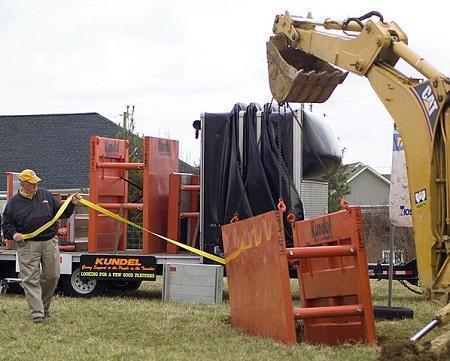Trenching and excavation are essential tasks in the construction industry, but they also pose significant hazards to workers. According to the Occupational Safety and Health Administration (OSHA), trench collapses are one of the leading causes of fatalities in the construction industry. The horrific consequences of trench collapses are often fatal, yet fully avoidable. According to NIOSH, from 2003 to 2017 alone, 373 casualties were documented due to trenches- many in the construction industry. However, safety protocols such as engineering controls and protective gear can drastically reduce dangers and avert future cave-ins. It’s time we work together to prevent these tragedies through better practices! (1)
To ensure the safety of workers, it’s essential to follow proper protocols and procedures when working in trenches and excavations. The following 10-item checklist provides tips on how to mitigate the hazards associated with trenching and excavation. By following these tips, workers can ensure a safe work environment and prevent potential accidents.
- Conduct a thorough site assessment before beginning work. This is crucial to identify potential hazards such as underground utilities, unstable soil, and weather conditions. A thorough site assessment will also help determine the appropriate sloping and shoring techniques to prevent cave-ins, and the need for proper ventilation systems. By taking the time to assess the site, workers can ensure a safe work environment and prevent potential accidents.
- Implement proper sloping and shoring techniques to prevent cave-ins. Proper sloping and shoring is essential to prevent cave-ins, which can lead to serious injuries or fatalities. Sloping and shoring techniques include using proper equipment and materials to support the walls of the trench or excavation, such as trench boxes, hydraulic shores, and soil nails. Workers should also be trained on the proper installation and use of this equipment to ensure the safety of the excavation.
- Use appropriate personal protective equipment (PPE). Wearing the appropriate PPE such as hard hats, steel-toed boots, and high-visibility clothing can protect workers from potential injuries. Hard hats, for example, can protect workers from head injuries caused by falling objects, and steel-toed boots can protect workers from crushing injuries. Proper PPE also includes respirators and other equipment to protect workers from toxic gases that may be present in the excavation.
- Provide proper ventilation to prevent toxic gas buildup. Proper ventilation is essential to prevent toxic gas buildup in trenches and excavations. This includes installing ventilation systems, such as exhaust fans, and monitoring air quality regularly. Workers should also be trained on the proper use and maintenance of ventilation systems to ensure they are functioning properly.
- Have a means of egress readily available at all times. Having a means of egress, such as ladders, ramps, or other escape routes readily available at all times is a critical aspect of excavation safety. This allows workers to quickly and safely exit the excavation in case of an emergency. Workers should be trained on the location and proper use of these means of egress.
- Train workers on proper excavation and trenching procedures. Proper training on excavation and trenching procedures is essential to ensure the safety of workers. Training should include information on the proper use of PPE, excavation techniques, and emergency procedures. Employers should also provide ongoing training to ensure that workers are up-to-date on the latest safety protocols and
- Regularly inspect trenches and excavations for potential hazards. Regular inspections are crucial to identify and address potential hazards before they lead to accidents or injuries. This includes checking for cracks in the walls, signs of cave-ins, and other potential hazards. Workers should be trained on how to properly inspect trenches and excavations and how to report any hazards they identify.
- Clearly mark and protect trenches and excavations to prevent unauthorized access. Properly marking and protecting trenches and excavations can prevent unauthorized access, which can lead to accidents or injuries. This includes using appropriate barricades, warning signs, and other measures to keep unauthorized personnel away from the excavation site. Employers should also have a plan in place to monitor and enforce these measures.
- Have a plan in place for emergency situations. Having a plan in place for emergency situations, such as cave-ins or toxic gas leaks, can help ensure that workers know what to do in case of an emergency. This includes having emergency equipment readily available and providing training on emergency procedures. Employers should also practice emergency drills to ensure that workers are prepared for potential emergencies.
- Continuously review and update safety protocols and procedures. Safety protocols and procedures should be regularly reviewed and updated to ensure compliance with OSHA regulations and industry standards. This includes updating training materials, equipment, and procedures to reflect the latest safety practices. Employers should also regularly review incident reports and other data to identify and address potential safety issues.
It’s important to remember that trenches and excavations can be unpredictable, and even small mistakes can lead to serious accidents and injuries. By following these safety tips and having a plan in place, workers can safely carry out their tasks and protect themselves from potential hazards. Employers should also make sure that workers are properly trained, that equipment and materials are in good working condition, and that safety protocols are regularly reviewed and updated. By taking the necessary precautions and implementing proper safety measures, employers can ensure the safety of their workers and the success of their projects.
References:










